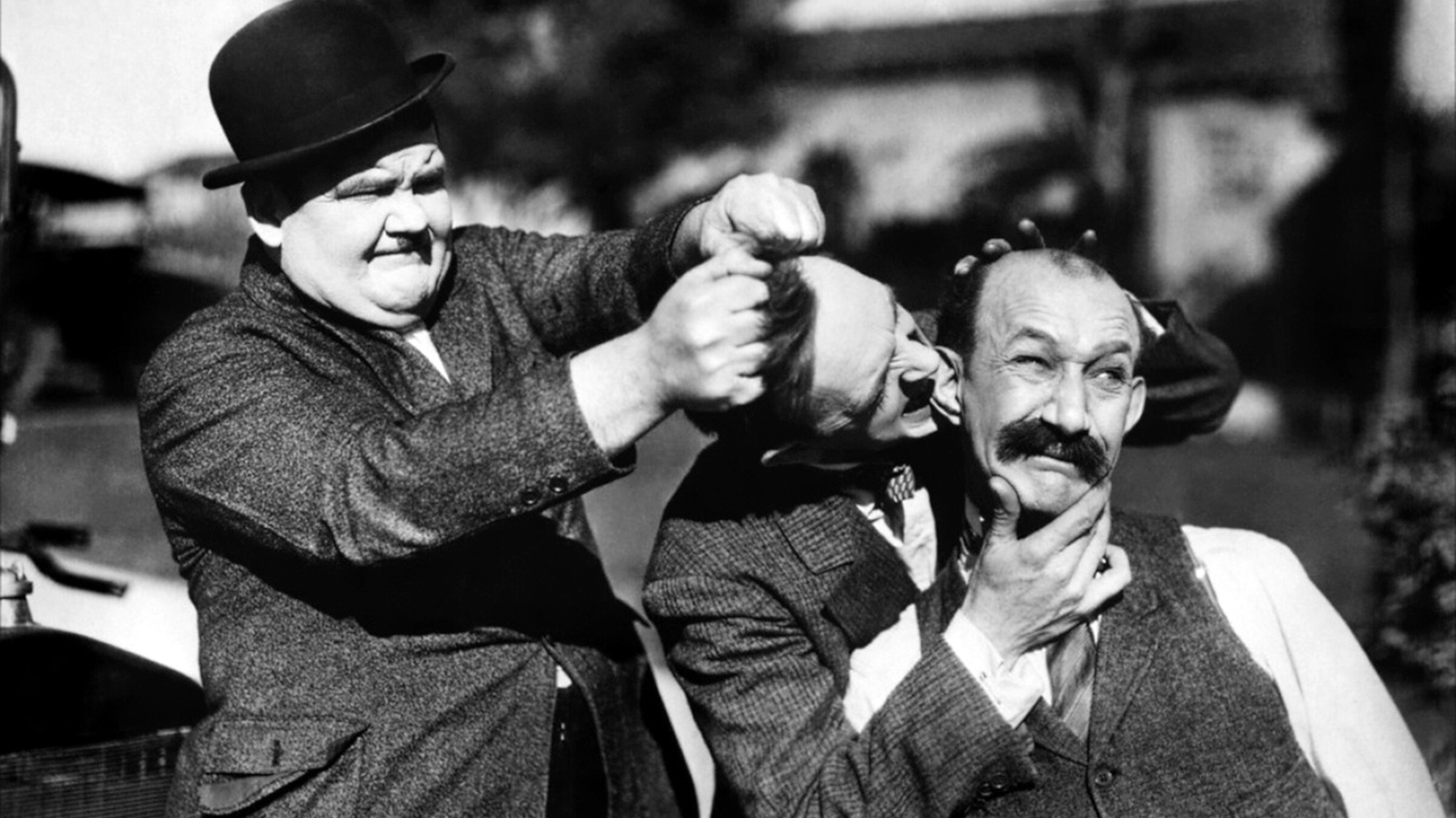THE COOK, 1918
Directed by Roscoe Arbuckle
Cast Roscoe “Fatty” Arbuckle (The Cook), Buster Keaton (The Pest Waiter), Al St. John (The Toughest Guy), Alice Lake (The Cashier), John Rand (The Proprietor), Bobby Dunn (The Dishwasher), Luke the Dog (Himself) Producer Joseph M. Schenck 1918 Photographer George Peters Editor Herbert Warren Print Source George Eastman House
PASS THE GRAVY, 1928
Directed by Fred Guiol
Cast Max Davidson (Father), Martha Sleeper (Daughter), Spec O’Donnell (Ignatz), Bert Sprotte (Schultz), Gene Morgan (Schultz’s Son) Producer Hal Roach 1928 Supervisor Leo McCarey Photographer George Stevens Editor Richard Currier Titles Reed Heustis Print Source George Eastman House
BIG BUSINESS, 1929
Directed by J. Wesley Horne
Cast Stan Laurel (Stan), Oliver Hardy (Ollie), James Finlayson (Homeowner), Tiny Sandford (Policeman) Producer Hal Roach 1929 Supervising Director Leo McCarey Photographer George Stevens Editor Richard Currier Titles H.M. Walker Print Source Library of Congress
Presented at SFSFF 2010
Musical Accompaniment Dennis James on the Mighty Wurlitzer
Short subjects dominated the first two decades of cinema history, remaining an important part of the movie-going experience into the 1950s. Short films continue to be made, but they’re usually seen in theaters only as a part of film festivals. For the past 30 years, general-release theatrical shorts have been limited to commercials and cartoons produced by Pixar, Disney, or Dreamworks to accompany one of their own animated features. The last gasp of the theatrical short subject came in 1980, with Supermarket Pink, a Pink Panther cartoon. By then, even animated shorts were rare, Warner Bros. having ended its Looney Tunes series in 1969.
From the 1920s through the mid-1950s, feature films were accompanied by several short subjects, from comedies and travelogues to newsreels and educational films. Independent exhibitors assembled their own programs while theaters controlled by the major studios were provided a set package. These studio-packaged shows were outlawed by the same 1948 Supreme Court decision that forced the studios to sell off their theater chains. Short subjects moved from the theaters to television, in the form of half-hour and hour-long shows. As the sale of movie tickets declined, the majors combated the new medium by going big with widescreen formats, from Cinerama to Super-Panavision, and longer features. The Ten Commandments (1956) had a runtime of 220 minutes and Cleopatra (1962) clocked in at 243 minutes. No time was left for theatrical short subjects. Some smaller studios gave up producing for theatrical release and aimed their product at television instead. Hal Roach Studios licensed its entire library for television broadcast in 1943, including its films featuring Stan Laurel and Oliver Hardy. Roach also produced many original productions for TV, including My Little Margie and The Abbott and Costello Show.
Pass the Gravy came out of Hal Roach Studios, one of the most prolific producers of short films. The two-reel film features Max Davidson, a Berlin-born comedian whose trademark was a comic Jewish stereotype that was commonly accepted in the 1920s, although many would find it offensive today. The ethnic humor is muted in this short, which revolves around an urban chicken farm, a situation that was commonplace 80 years ago when small farms dominated American agriculture.
Big Business also comes from Hal Roach Studios and features Stan Laurel and Oliver Hardy. An English comedian who was once Charlie Chaplin’s understudy, Laurel came to America in 1916. Hardy hailed from Georgia and made his first films in Jacksonville, Florida, in 1913. The two met while working for Hal Roach in 1925. Director Leo McCarey suggested the duo become an official comedy team after they appeared together in The Second Hundred Years (1927). James Finlayson, their antagonist in Big Business, serves much the same function in 33 Laurel and Hardy films.
The Cook features Roscoe “Fatty” Arbuckle and Buster Keaton in a short made by Arbuckle’s own production company. Arbuckle was at the height of his fame. Keaton started making films with and for Arbuckle in 1917. Both were accomplished vaudeville clowns with brilliant comic timing and the stamina to perform grueling and exacting stunts. The Cook, the last short the two made together, was considered lost until a deteriorated nitrate print was found in 1998 at the Norwegian Film Institute in Oslo. Sections are missing from the print, but the story still makes sense, and the broad physical comedy survives.
Presented at SFSFF 2010 with live music by Dennis James on the Mighty Wurlitzer

